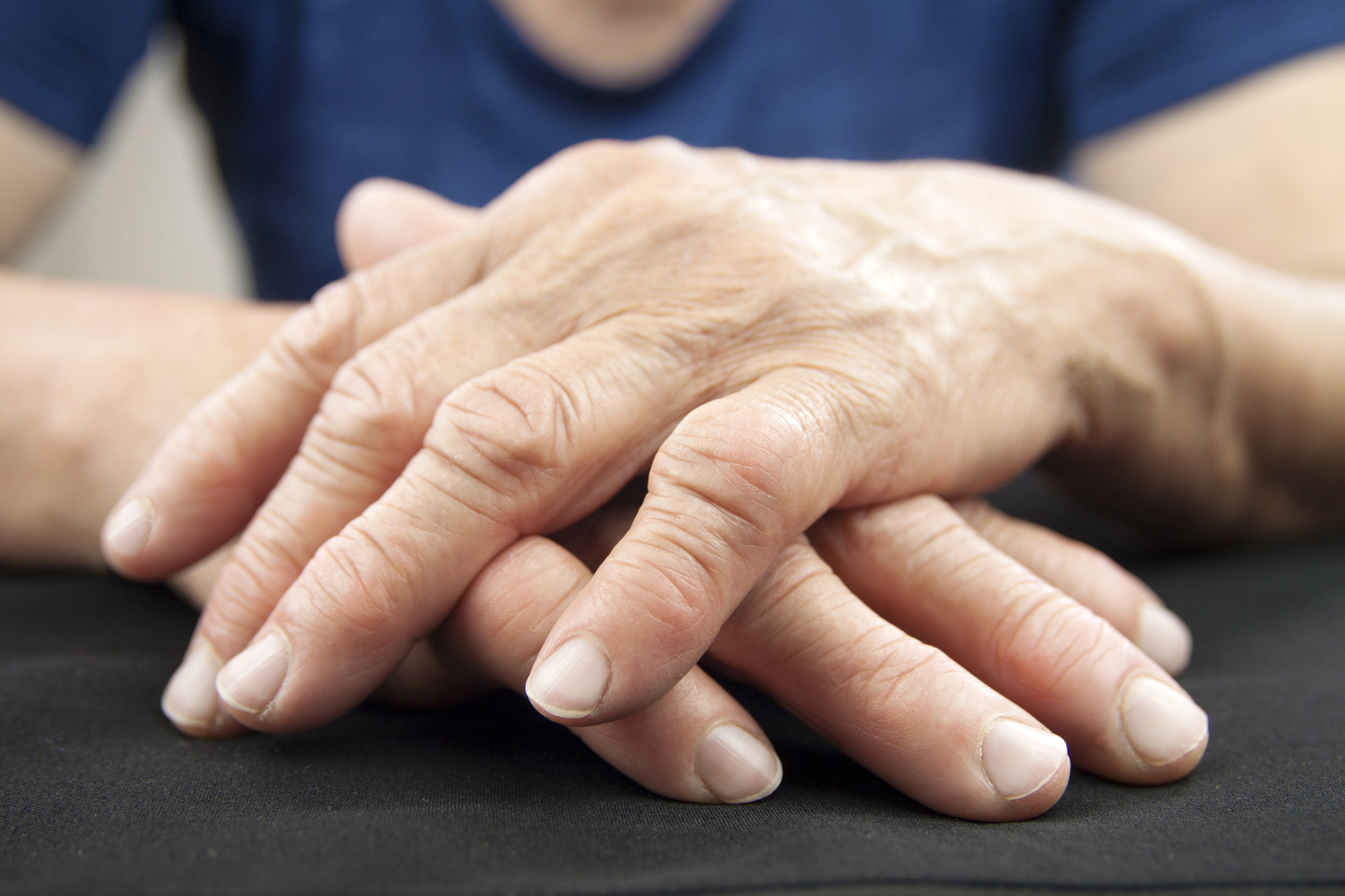Rheumatoid arthritis is a chronic inflammatory disease in which the body’s immune system attacks healthy tissues and organs.
While this autoimmune disease is primarily characterized by warm, swollen, painful joints, it can also affect the skin, eyes, lungs, heart and blood vessels. Read on to learn more about rheumatoid arthritis symptoms and treatment.
What Is Rheumatoid Arthritis?
With rheumatoid arthritis, the immune system attacks the lining of the membranes that surround your joints, a structure known as the synovium. The resulting inflammation thickens this lining and can result in destruction of cartilage and bone, weakening of tendons, and loss of joint shape and alignment. While experts don’t know exactly why rheumatoid arthritis develops, they do know that some people are more genetically susceptible to environmental factors that can trigger the disease.
In addition to joint pain and stiffness, common symptoms of rheumatoid arthritis include fatigue, fever, and unexplained weight loss. The joint pain most commonly affects the fingers and toes first before spreading to the wrists, knees, ankles, elbows, hips and shoulders, while the stiffness experienced by those with rheumatoid arthritis tends to worsen after periods of inactivity, such as first thing in the morning. Symptoms tend to worsen periodically in episodes called “flares” before resolving after a time and then returning again.
Left untreated, rheumatoid arthritis can lead to dry eyes and mouth, infections, unusually high body fat content, carpal tunnel syndrome, osteoporosis, cardiac issues, lung disease, and lymphoma. If you’re experiencing symptoms that are consistent with rheumatoid arthritis, talk with your doctor right away.
Who Is at Risk for Rheumatoid Arthritis?
Certain groups of people are at a higher risk for developing rheumatoid arthritis. It’s more common among women, people between the ages of 40 and 60, those with a family history of the condition, those who smoke, people who have been exposed to environmental pollutants like asbestos or silica, and those who are obese. In addition, smoking is associated with more severe symptoms among those who have this form of arthritis.
How Is Rheumatoid Arthritis Diagnosed?
Because the symptoms of rheumatoid arthritis mimic those of other diseases, the condition can be difficult to diagnose. Your doctor will perform a physical examination, blood testing to look for elevated erythrocyte sedimentation rate (ESR, or sed rate) or C-reactive protein (CRP), which may indicate inflammation, and X-rays or other imaging studies to confirm and check the progress of the disease.
How Is Rheumatoid Arthritis Treated?
Common Treatment Options
If you are diagnosed with rheumatoid arthritis, your doctor will likely recommend a comprehensive treatment program to help you to manage this chronic condition. The common treatment options include joint stress reduction, medications, physical therapy, occupational therapy, and surgical intervention.
Your doctor may prescribe a combination of non-steroidal anti-inflammatory drugs, disease modifying anti-rheumatic drugs, and corticosteroids. NSAIDs help to reduce inflammation and work quickly while DMARDs take longer to have an effect. DMARDs are prescribed to slow the loss of cartilage so that the disease progression may be slowed. Corticosteroids help to boost your immune system and to fight inflammation. Your doctor may prescribe oral corticosteroids or may inject them directly into your affected joints.
To reduce the stress that is placed on your joints, your doctor may recommend that you lose weight if you are heavy and to engage in regular exercise to strengthen the muscles that surround your joints. You will likely be referred to a physical and occupational therapist so that you can learn effective exercises to help to strengthen your muscles and to increase your flexibility.
The surgical options for people who have rheumatoid arthritis include synovectomies and total joint arthroplasties. Synovectomies may only give temporary relief, but they may offer longer-lasting relief when people are suffering from symptoms in their wrists. Total joint arthroplasties have been shown to be very successful in the reduction of pain and the improvement of function.
Alternative Treatment Options
There are several alternative treatment options that have been shown to reduce the symptoms of rheumatoid arthritis. Turmeric supplements have been shown to reduce inflammation, and ginger root has been shown to help to lessen pain and discomfort that are associated with RA. Doctors also recommend that people take fish oil supplements because they contain omega-3 fatty acids, which have anti-inflammatory properties.
In addition to supplementation, people should try to eat healthfully to help to improve their symptoms. Mediterranean and vegetarian diets have both been shown to help to reduce pain and inflammation that are caused by RA.
A French study found that people who followed a vegan or vegetarian diet reported improvements in the swelling and pain from their rheumatoid arthritis. However, these diets are difficult to maintain, leading many people to stop them. The Mediterranean diet, which includes lean meats, fish, leafy vegetables, and monounsaturated fats, may be easier for people to follow. A study of people who suffer from RA and who followed the Mediterranean diet showed clinical improvements from the diet.
T’ai Chi and yoga have both been shown to benefit people who have rheumatoid arthritis. Mineral baths may also help to reduce the swelling and pain that is caused by RA, and some patients may benefit from magnet therapy on their joints.
